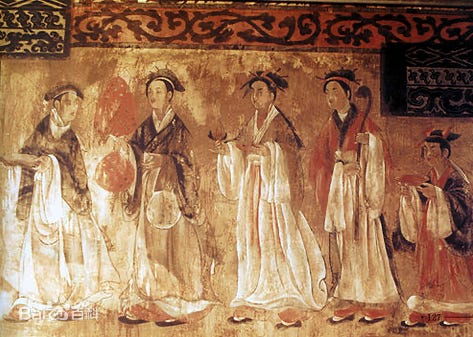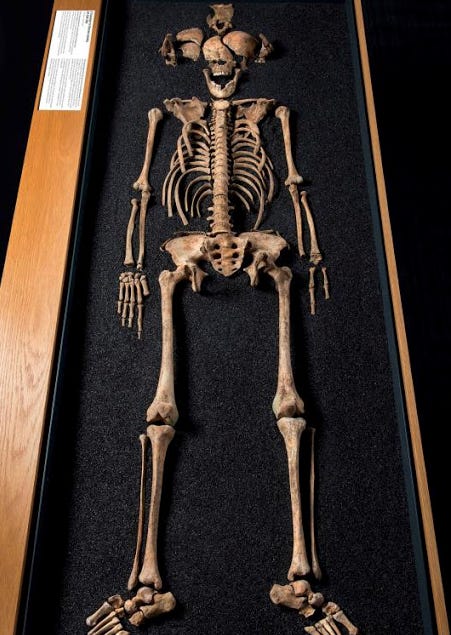The Han Dynasty, Rome's Equals in the East
China history 6: were Chinese living in Roman Britain?
Dear all
We return to the History of China. In the last bulletin we spoke about the unification of China under the Qin Shi Huangdi, the First Emperor. The dynasty he founded (pronounced “chin”) gave us the word “China”, and today we turn to their successors, who gave us the name of the ethnicity that today makes up 93% of China’s population: the Han.
In the meantime I thought it might be useful to go through the history posts so far, and in chronological order, just in case there’s any confusion about which Dynasty goes where. (With so much history and so many dynasties to remember, this would be hardly surprising).
Introduction to 5,000 years of Chinese history
The first Dynasty, the Xia (2070 BC – 1600 BC) – they who tamed the rivers
The second Dynasty, the Shang (1600 BC – 1046 BC) – they who developed writing
The third Dynasty, the Zhou (1046 BC – 221 BC) – they who started the Mandate of Heaven
The Warring States Period (475 BC – 221 BC) – seven states and the bloody struggle for hegemony
The First Emperor and the Qin Dynasty (221 BC to 207 BC) – he who unified China for the first time
As part of the historical series I’ve also done a beginner’s primer on Confucianism, which covers a bit of Legalism too.
I hope you enjoy below, and please remember to comment, like, share and subscribe.
Many thanks for reading.
***
It was Qin Shi Huangdi, the First Emperor, who unified China in 221 BC. The “wolf-hearted” Emperor, as the historians called him, wanted his Qin dynasty to last 10,000 years. Instead, it lasted for just a couple. Not long after the Second Emperor took over, the rage that had been building over the First Emperor’s brutal rule – the scholars buried alive, the paranoid bloodletting of people even suspected of treason – came to the public fore and the new ruler, and the hopes for a long dynasty, were swept away. But the idea of China lived on.
After three years of civil war the country was once again unified, this time not by a king, but by someone very much at the other end of the social spectrum. Liu Bang is one of the more interesting characters to emerge from ancient China. Born into a peasant family, he became a well-regarded sheriff, switched sides to banditry, and then waded into the bloodshed arising from the fall of the Qin. He emerged as the leader of a major rebel force, and after years of battling the other warlords, won several famous victories to became the first commoner to take the Imperial throne.
The Emperor Han Gaozu (roughly, Great Ancestor of the Han), as Liu Bang became, had a shaky reign that lasted just seven years (202 – 195 BC). The dynasty that he founded, however, proved to be one of the hardier ones in China’s history, ruling from 202 BC to AD 220, roughly contemporaneous with the Roman Empire between the fall of Carthage and the reign of that most psychopathic of emperors, Elagabalus.

The Han Dynasty is remembered mainly positively, in particular for its material and its cultural riches. Murals and statues of the time show richly dressed men and women, sumptuous feasts, and even domesticated dogs enjoying the pleasanter things in life, and there was a bubbling cultural scene too. One of the most famous literary outputs of the time is Records of the Grand Historianby Sima Qian (145-86 BC). Thought of as the father of Chinese history – as Herodotus is thought the father of history in the West – Sima Qian’s works have become a key source of much of our knowledge of ancient China.
It was also a time of expansion and foreign contact, building upon the progress made by the Qin. Its holdings now included parts of Manchuria and North Korea to the northeast, all of northern Vietnam in the south, and most lucratively of all, the desert oases of Xinjiang strung out along the Silk Road.
International trade was important to the Han. Commercial links with South East Asia and India made the country rich, but also made the Chinese realise for the first time that they weren’t the only civilisation out there. This was especially so when they discovered that there were two great empires to the west. The first were the Parthians/Persians. The second, a bit further away, was an empire that the Chinese called Daqin. We call it Rome.
Roman coins and glass have been found in Chinese archaeological deposits of the time, and in return silk became a common commodity amongst the Roman upper classes. (An example of silk-wear can be seen on a famous Pompeiian fresco that looks, to the untrained eye, remarkably like some of the Han murals from the same time.) It is thought that the Emperor Marcus Aurelias dispatched the first Roman embassy to arrive in China, in about AD 166, and contemporary Chinese writers went into great detail about what they described as the counterweight civilisation at the other end of the Silk Road. It’s certainly true that their two capital cities, Rome and Chang’an (modern day Xi’an, home of the Terracotta Warriors), were the most populous and developed metropolises of the time, with perhaps a million inhabitants each.
That the two empires knew about each other is without doubt. What was debated until recently was how much interaction there was between them, the odd embassy aside. Then, in 2016, two likely Chinese skeletons were unearthed from an archaeological dig in Roman London. Why these people were in Londinium sometime between the second and fourth centuries AD is a mystery - were they traders, or maybe captured slaves? If the former, was there a Chinese trading colony in Roman Britain?

Whatever the reason, the China that these individuals knew was going from strength to strength. Enriched and stabilised partly by this wellspring of trade, the Han further developed the economy, re-establishing a common coinage, and nationalising industries like the production of salt and iron. Technological advances were impressive too, like ships’ rudders and primitive seismometers that relied on hanging pendulums. It was at this time that paper began to be widely used, powering the bureaucracy and enhancing tax collection and social control across the empire.
The riches of the Han lie in contrast to the rough, ready, and brutal start to the Dynasty. Liu Bang was a peasant soldier through and through, addicted to hard drinking and horseplay with his old campaigning pals. It was instead his wife, Empress Lü, who became the rock of the throne. Such was her power that the later official history of the time mentions her as the second ruler of the dynasty rather than the actual second Han emperor, her son, who she terrorised into being nothing more than a sex-obsessed puppet.
An anecdote from the time reveals how ruthless the Empress Lü could be, especially when it came to continuing her line. Shortly after the death of her husband, after just seven years on the throne, she needed to ensure the throne went to her son rather than to any of the numerous children he had had with his concubines. The key challenger was the son of the Lady Qi, who was thought to be the favourite of the Emperor. The Empress Lü not only had the Lady Qi’s son, Liu Ruyi, killed to make sure her own offspring could claim the throne, but she indulged in some retribution against the Emperor’s darling too. Sima Qian describes what happened next: “Empress Lü later cut off Lady Qi’s hands and feet, plucked out her eyes, burned her ears, gave her a potion to drink which made her dumb, and had her thrown into the privy, calling her the ‘human pig’”
Despite the harshness of these early years, the time of the Han was mainly peaceful, like the Roman Empire in its heyday under the Five Good Emperors (AD 96-180, ending with the death of Marcus Aurelias).
Yet like every dynasty before and after, the Han eventually started to crumble. The bloodshed subsequently wrought was above and beyond anything seen since the days of the Warring States – as we will see next time.



